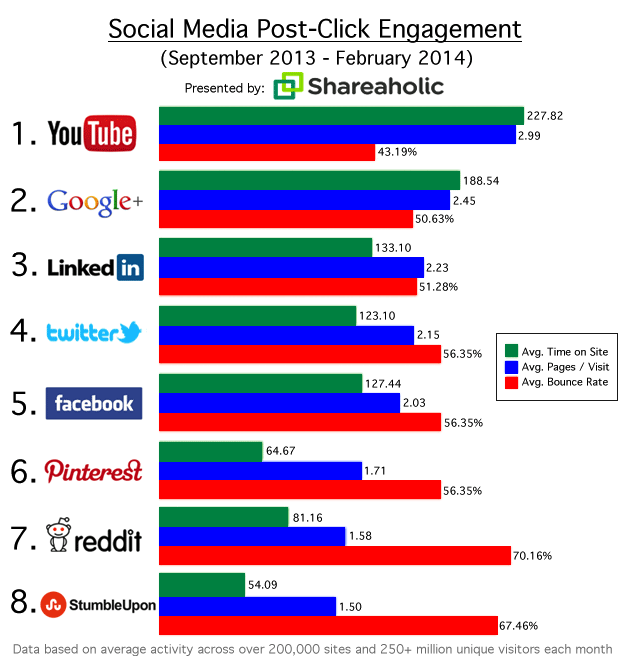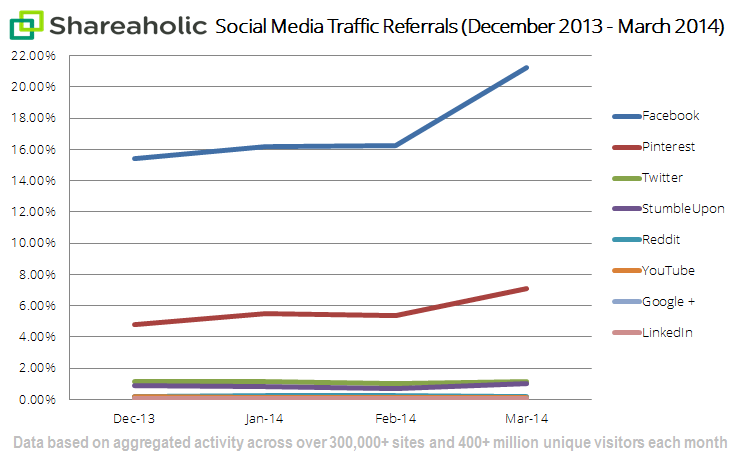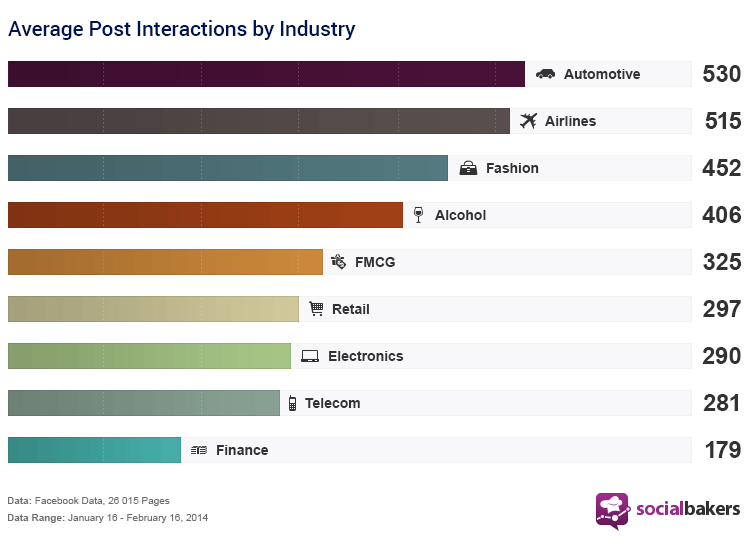Curated by Mathew Anthony for those who want to get, keep and grow their customers ... and some trending issues
Thursday, July 31, 2014
Tuesday, July 29, 2014
Five Shocking Facts That Will Change Your Entire Approach to Social Media
http://blog.kissmetrics.com/shocking-social-media-facts/?utm_medium=email&utm_campaign=blog_newsletter&utm_source=pardot&utm_content=blog_post_7_28_14&utm_term=null
Social media is fraught with legend, hysteria, and mass confusion. Because of its intensely personal nature, we tend to approach social media with a lot of strong feelings about its effectiveness, lack thereof, best practices, and how things should be done.
Since most of us use Facebook, we think we know how effective it will be, or what kind of posts garner the most attention and interaction. Since we have a Twitter account, we have a sense of knowledge about how it works, and what a business should do (or not do) on Twitter.
All that is great, but how much of our social media behavior is founded upon fact? I decided to dig into the data and do some research. What I’ve extracted below are five surprising data points that will have a profound effect on how you approach social media.
1. Email marketing has an ROI of 4,300%.
What? A statistic about email? You thought this was about social media, right?
My title is “Five Shocking Facts That Will Change Your Entire Approach to Social Media.” This statistic qualifies as shocking, and it impacts the way we approach on social media.
The basic fact is this: Email marketing has a huge ROI — way better than any social media marketing ROI can ever dream of achieving. Compare 4,300% that with the ROI of social media, which is crawling around on the floor. Is there even a comparison?
Take a look at this chart, released by Custora in 2013. They surveyed the owners of ecommerce sites to find out where these sites got their customers. Here are the top six sources:
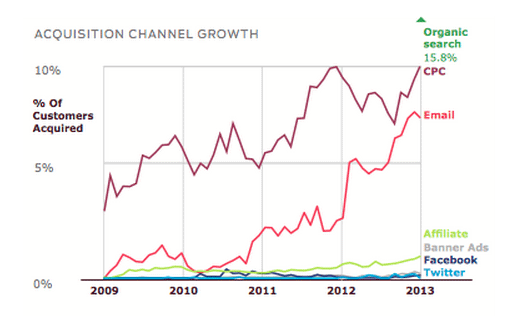
Paid and organic search have the highest customer acquisition percentages. The next biggest contender is email. Based on its ROI — higher than paid and organic search — it’s a no brainer. Email marketing is awesome.
According to the chart above, the fascinating thing about email marketing is that its acquisition rates are rising dramatically. It has quadrupled over the past four years. Email marketing’s effectiveness far outranks any social media platform, and its growth outstrips them.
Even the customer lifetime value (CLV) of social media is hardly worth a second glance. Again, email marketing crushes social media by a huge margin:
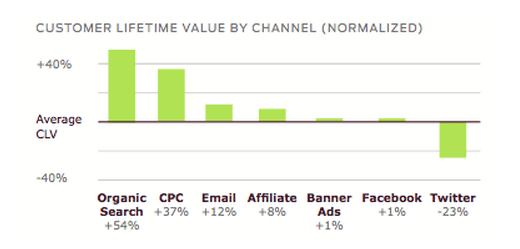
Simply put, email marketing is way more effective than social media marketing. It has greater effectiveness, better ROI, and higher CLV.
Learn this lesson: Spend more time and money on email marketing than on social media marketing.
2. YouTube has the highest engagement and lowest bounce rate.
Whenever we think of “social media,” we automatically think of Facebook, Twitter, and Google+.
What about YouTube? Check out these engagement stats!
- Average time on site: 227 seconds
- Average pages per visit: 2.99
- Average bounce rate: 43.19%
How does this stack up against the rest of the social media landscape? Decide for yourself:
The Shareaholic analysis is based on post-click behavior, which refers to clicking on a link that a friend shares socially. As the Shareaholic analysis stated, “YouTube is the undisputed champion. YT drives the most engaged traffic.”
YouTube deserves more of your social media time and effort. You can’t afford notto put more work into creating and adding videos. The more YouTube content, the more you’ll engage your potential customers.
Learn this lesson: If you want engaged traffic, spend time optimizing YouTube.
3. Facebook drives more referrals than any other social platform.
Want to know which social media site sends you the most amount of traffic? It’s Facebook — by far.
Shareaholic analyzed metrics taken over four months, measuring the effectiveness of social media platforms. There was no contest. Facebook crushed the competition, asserting itself as the most powerful social media referral engine on the planet.
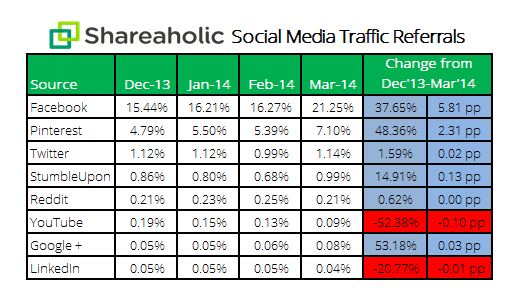
Companies gripe and complain over the way that Pages have been squashed in the Facebook algorithm. I get that. Facebook wants more ad revenue.
But even though page interaction is shrinking, there’s nothing shrinking about the number of referrals that Facebook continues to drive. Simply stated, Facebook still drives more traffic than any other social media site, soaring way above its nearest referral competition, Pinterest.
The reason why I’ve included this in my list of facts is because many marketers have become disillusioned with Facebook.
Nowadays, when I endeavor to check my Facebook statistics, I do so with the window open, birds singing, a pint of ice cream at my desk, and party jams playing on my jambox….Checking Facebook statistics has been bad news for a lot of us lately as we wrestle with declining numbers and shrinking reach.
While Kevan is staving off Facebook depression with ice cream parties and fresh air, Eat24 just decided to end the relationship with a “How dare you!”
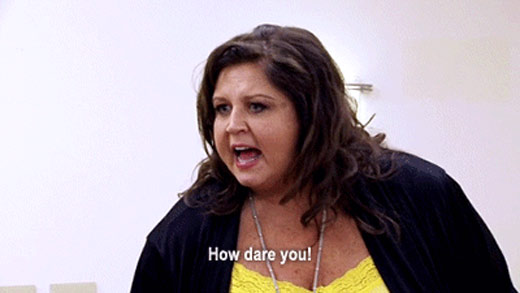
The super long breakup letter that went into overtime with a P.P.P.S.S.S. was full of foodie talk and hurt feelings. But they were gone from Facebook for good.
If you have a fan base below 10,000 (that’s most of us), and only 28 interactions per post, please don’t be discouraged, don’t binge eat, and don’t write a breakup letter. You’re right where you ought to be, as ranked by Social Baker’s average interaction chart.
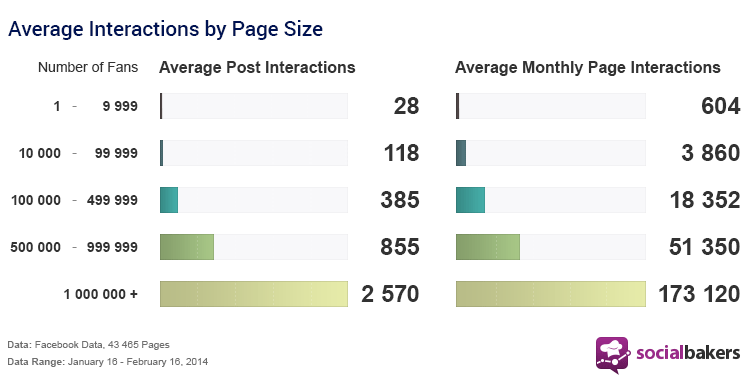
And if you’re in an unsexy industry like finance or telecom, you can expect your average post interaction to be lower, than say, an alcohol or fashion site.
In spite of the apparent downward spiral of Facebook metrics, I suggest not giving up on Facebook. Though it is fickle, and though your page isn’t featured at the top of everyone’s news feed, and though you may have to turn up your party music while you check your stats, Facebook is still giving you referrals.
As Kevan’s brilliant article concluded — “A counterintuitive way to combat Facebook reach: Stop caring about it.”
Learn this lesson: Stick it out with Facebook.
4. Pinterest pins are worth 78 cents each.
First off, a Pinterest disclaimer (or two), and then a Pinterest happy dance.
The first disclaimer is this — Pinterest has high bounce rate (53%) and low engagement. Disclaimer number two: Pinterest doesn’t work for everyone. If you are into food, crafts, photography, weddings, design, fitness, humor, travel, fashion, and inspirational quotes, then Pinterest is killer. It holds promise for some, but not for all.
The happy dance is this — Pinterest is the second biggest social media referral platform. Though it trails Facebook distantly, it still beats out Twitter, YouTube, Google+, and LinkedIn by a sizeable margin.
Now, let’s talk about ROI. Pinterest, as it turns out, does have one. But it’s a delayed reaction. When a pinner curates his or her pinboard, it takes a while for there to be social buildup, let alone revenue. Unlike Twitter, which has a short half-life, Pinterest visits increase as time goes on. It’s like wine. The older, the better.
As it turns out, the revenue doesn’t start happening until more than two months after pinning. Pinners spend more time exploring other people’s pinboards then they do searching for stuff offsite to pin. The average Pinterest pin gets 10 repins, but it takes time for those pinners to start repinning pins. This leads to a corresponding delay in revenue.
Pinterest is money, but it’s slow money. It’s like investing in a CD or a bond. The egg just takes a little while to hatch.
Learn this lesson: Use Pinterest. And be patient.
5. 65% of Twitter users expect a response in under two hours.
Customers use Twitter like a company hotline. If you don’t respond within minutes, you’re toast. Here are the lofty chronological expectations of Twitter users, in all their statistical glory:
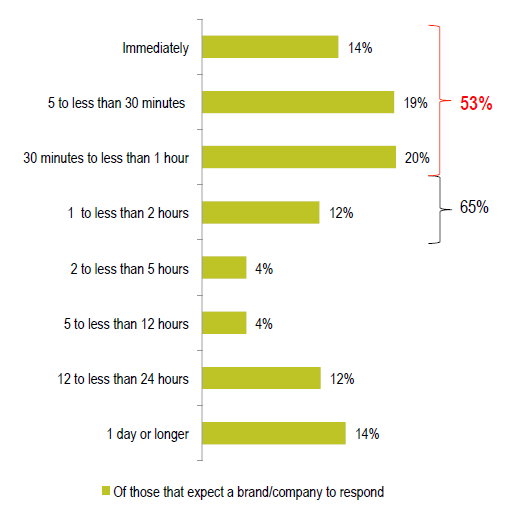
The Lithium study that produced this statistic had the headline, “Consumers Will Punish Brands that Fail to Respond on Twitter Quickly.” The flip side, “consumers will reward brands that harness Twitter’s power to meet their rising expectations.”
What kind of punishment are we talking about?
- “38% feel more negative about the brand.” As a result, they may no longer purchase from the company.
- “60% will take unpleasant actions to express their dissatisfaction…publicly shaming the brand on social media” In other words, they may spread their grief further on Twitter. It’s easy to tweet off a 140-character-or-less gripe about the company. “74 percent of customers who take to social media to shame brands believe it leads to better service.”
What’s in it for brands who are on the ball, and who respond to Tweets instantaneously?
- 34 percent are likely to buy more from that company;
- 43 percent are likely to encourage friends and family to buy their products;
- 38 percent are more receptive to their advertisements;
- 42 percent are willing to praise or recommend the brand through social media.
There’s a lot to gain by a quick response, and a lot to lose if you don’t. So if you get that Twitter notification on lunch break, don’t wait. Step on it, respond right away, and please your customers’ socks off.
Learn this lesson: If you’re going to use Twitter, stay on top of it.
Conclusion
Here are the five lessons we need to learn
- For right now, spend more time and money on email marketing than on social media marketing.
- If you want engaged traffic, spend time optimizing YouTube.
- Stick with Facebook.
- Use Pinterest. And be patient.
- If you’re going to use Twitter, stay on top of it.
Facts are indisputable, and the action points are obvious. Let’s not get lost in the romance and novelty of social media. Let’s stay clear headed, smart, and engaged. There’s power in social media, and we need to handle it in the right way.
What are some of the most compelling social media statistics that you’ve heard?
How to Use Facebook Gated Campaigns for Leads and to Grow Your List
http://www.socialmediaexaminer.com/facebook-gated-campaigns/
Do you use Facebook giveaways and contests to collect information about your fans?
Action-gated Facebook campaigns require users to share specific data or feedback before they can enter a giveaway or contest.
In this article I’ll show you the concept of action-gating and how three companies are using it effectively to meet their goals.

Here’s a tactic to use to grow your list, get better feedback or increase user-generated content.
Why Facebook Gated Campaigns?
Facebook gated campaigns use a pretty simple idea called action-gating: A companyoffers a prize in exchange for personal data (like an email address or zip code).

Action-gating is a good way to collect valuable data from fans.
Action-gated campaigns are hosted on your Facebook page via a third-party appinstead of as a stand-alone update. These campaigns aren’t for collecting general comments under a status update; they’re for collecting specific demographic or contact information.
Action-gated campaigns require users to complete a specific task in exchange for something valuable from your brand, like access to or extra entries in a promotion, access to a coupon, etc. The user’s task may be filling out a form, uploading content, voting, etc.
Simply asking people to like your page (known as like-gating or fan-gating) to have access to your campaign doesn’t collect data you can use for business planning purposes (as you’ll see in #1 below) or future contact. Likes don’t get you extra content you can use across your other social channels to gain more attention. Action-gating does.

Require fans to create content to enter a contest or giveaway.
Below I discuss three examples of companies using action-gating to gather valuable information from their fans and followers.
#1: Collect Location Data
Uber and The Honest Company are examples of companies partnering to host an action-gated giveaway. Rather than using a like-gating tactic, they opened entries to anyone, whether that person likes either page or not.
Each business page posted a series of status updates with a link to the entry page. When users clicked the link, they were taken to a form built to require people to share their name, email address, date of birth and zip code in order to enter. (Of course, they could also like the Uber or The Honest Company’s page, but it wasn’t a requirement for entry.)

Uber offered a month of free rides plus a $500 gift card to gather extra fan data.
Sharing that much personal information is quite a hoop to jump through, but the prize is worth $500. When a prize has high value, people are more willing to share their information.
With that valuable fan data in hand, Uber and The Honest Company learn where their fans live.
But wait. Can’t you get that same information from Facebook Insights? Well, yes, you can see the location of your fans by city, but collecting specific information like zip codes takes location data a step further.

The Honest Company asks for just enough information to learn a little more about audience.
The collected zip codes allow Uber to identify neighborhoods that could be targets for expansion and gives The Honest Company (which makes natural baby and home-care products) insights into which retail outlets their salespeople should call on.
That kind of targeting is much more valuable than a plain old like.
#2: Gather User-Generated Content
Few companies do a better job of encouraging (and getting) user-generated contentthan GoPro. The fan-submitted videos often get shared and commented on like crazy.
To get customers and fans to share footage they’ve shot using a GoPro camera, the company has an action-gated Facebook campaign called the GoPro Creator’s Challenge.
For a chance to win $5,000 and have their video featured on the GoPro Network, fans have to upload a video entry.

Offer larger prizes to get people to take the time to contribute to a contest.
Shooting and uploading a video is more work than, say, answering a few questions on a survey, but the opportunity to win five grand makes the task worthwhile.
Keep in mind that GoPro doesn’t force users to like their page in order to enter the Creator’s Challenge. They’re assuming that people who genuinely love their brand and products will like the page because they want to.
GoPro’s personal reward comes in the form of high-quality video they can feature on their YouTube channel (which has more than two million subscribers), Twitter, Facebook and other social profiles.
#3: Round Up Potential Leads
Clothing retailer Lulu’s hosts a daily sweepstakes on their Facebook page. Their idea and execution are simple: Ask people to find a product on the Lulu’s website for a chance to win a $50 store credit.

Lulu’s hosts daily sweepstakes on their Facebook page to continually collect data from fans.
The feedback they get helps them determine what customers want to see more of. The beauty of this simple action-gated campaign is that any brand can do it.
Lulu’s uses a straightforward question that requires a short answer—a tactic that ensures a better response rate.
Also note how Lulu’s asks users for specific feedback—they steer entrants away from general comments. There’s no confusion on the user’s end and the task feels more like a creative break than tackling a homework assignment.
Lulu’s also collects email addresses as part of each entry so they can follow up with people outside of Facebook. This tactic is useful for a company like Lulu’s—or any company, really—because it lets them follow up via a customized email with a special deal.
Over to You
Action-gating offers more flexibility and value than a simple like-gated giveaway or contest. Collecting users’ personal data and feedback is just one way to use action-gating. You can also expand your reach by asking users to tweet about your campaign or share it on Google+ as an entry.
The key to successful Facebook gated campaigns is offering a significant prize that justifies the requirement for entry. The more you’re asking for, the more you have to offer in return.
What do you think? Have you used action-gating in a Facebook campaign? Will you try it in the future? Leave your comments below.
ABOUT THE AUTHOR, Jim Belosic
Jim Belosic is the CEO of ShortStack, a self-service software that allows businesses to create engaging campaigns for social, web and mobile. Other posts by Jim Belosic »
The Creative Art of Selling a Book by Its Cover
Peter Mendelsund, Book Designer, Debuts as a Writer
By ALEXANDRA ALTER

Peter Mendelsund often says that “dead authors get the best book jackets.”
Mr. Mendelsund, who has designed striking covers for departed literary giants like Kafka, Dostoyevsky, Tolstoy and Joyce, dreads working with picky writers who demand a particular font, color, image or visual theme. “It ends up looking like hell,” he said.
Then last year, Mr. Mendelsund, the associate art director at Alfred A. Knopf, became his own worst nightmare. He started writing a book himself. Coming up with a cover for his book, “What We See When We Read,” a playful, illustrated treatise on how words give rise to mental images, was excruciating, he said. As the author, he felt as if no single image could sum up the book’s premise. As the jacket designer, he had to put something on the front, or resign in disgrace. His first attempt was stark and off-putting: a plain black cover with small white text. “It was like stage fright,” he said. “I just seized up.”
Stage fright isn’t a chronic affliction for Mr. Mendelsund, a 46-year-old “recovering classical pianist” who taught himself graphic design. More often, he suffers from a surfeit of ideas. In the past decade, Mr. Mendelsund has designed about 600 book jackets, ranging from a sober, sophisticated cover for Tolstoy’s “War and Peace” to his whimsical Pop Art-like treatment of Kafka’s novella “Metamorphosis,” to the hypnotic fluorescent swirls on Stieg Larsson’s thriller “The Girl With the Dragon Tattoo.”

Mr. Mendelsund has long been regarded as one of the top book designers at work today, taking his place alongside design luminaries like Chip Kidd, Alvin Lustig and George Salter. Now, he’s making his debut as a writer, with two books coming out next week. Both explore the peculiar challenges of transforming words into images, and blend illustrations with philosophy, literary criticism and design theory.
In “What We See When We Read,” which is being published by Vintage Books next Tuesday, Mr. Mendelsund tackles the mysterious way text yields vivid mental pictures, even when the author supplies very little visual detail. Most readers, for instance, feel as if they can perfectly describe Anna Karenina, even though Tolstoy gives us little more than gray eyes, thick lashes and curly brown hair. In short, illustrated chapters, Mr. Mendelsund argues that reading is an act of co-creation, and that our impressions of characters and places owe as much to our own memory and experience as to the descriptive powers of authors.
On the same day, PowerHouse Books is releasing “Cover,” a 267-page coffee-table book with more than 300 of Mr. Mendelsund’s most arresting book jackets, and dozens of rejected drafts. The images are interspersed with notes on his process, along with essays by authors of some of the featured books, including the best-selling Norwegian crime writer Jo Nesbo and James Gleick, author of the nonfiction books “Chaos” and “The Information.”
“Most designers look for a central image to sum up a book, but Peter isn’t looking for an image, he’s looking for an idea,” Mr. Gleick said in an interview. For the hardcover edition of “The Information,” Mr. Mendelsund repeated the title about 60 times, so that it looks like a flood of code.
For much of his life, Mr. Mendelsund felt “visually illiterate,” he said. He grew up in Cambridge, Mass., the son of an architect and a high school history teacher. He started playing the piano at the age of 4. After studying philosophy and literature at Columbia University, he spent two years at a music conservatory and tried to make a living as a professional pianist. But he struggled on a classical musician’s salary, and, after several years, he found himself married with an infant daughter and no health insurance.
He decided to try graphic design, though he had no formal training. He read design books and picked up a few freelance projects, sometimes working free. A year later, he was hired as a designer at Vintage and Anchor Books.

John Gall, the former art director at Vintage and Anchor, said he saw Mr. Mendelsund’s artistic potential right away, but was even more impressed by his knack for literary criticism. “He combines very strong, very smart conceptual thinking with beautiful, risk-taking execution,” said Mr. Gall, who is now the creative director of Abrams Books.
To come up with a cover, Mr. Mendelsund begins by scribbling notes on a manuscript and underlining key thematic sentences. He hangs the marked-up pages above his computer. Then he begins cataloging his ideas on a piece of paper covered with 16 rectangles, filling each one with a word, phrase or tiny sketch. He picks the most promising concept and creates a draft on the computer.
Once he has a rough design in place, he will often switch to illustrating by hand, drawing with an ink brush, layering on paper collage or filling in blocky shapes with gouache, a dense watercolor. Finally, he prints out a mock cover, wraps it around a hardcover and leaves it on his bookshelf for a few days. If his eye is spontaneously drawn to it a day or two later, he considers his direction on the right track. If the cover disappears into the background, he knows something is missing.
He often repeats this process dozens of times. For a new edition of Julio Cortázar’s 1963 novel, “Hopscotch,” he created 60 covers before choosing one with a pattern of blue footprints imposed on white squares. “The Girl With the Dragon Tattoo” was even tougher, taking nearly 70 attempts. Theresulting cover became ubiquitous as the novel went on to sell about 10 million copies.
Sonny Mehta, the chairman and editor in chief of the Knopf Doubleday Publishing Group, said the surprisingly cheerful cover probably helped make the novel a blockbuster. “I didn’t want a gloomy Nordic landscape,” he said. “It was unconventional, and it worked.”
Hannah Depp, a floor manager at Politics and Prose, an independent bookstore in Washington, said she has seen customers respond to Mr. Mendelsund’s designs, particularly for classic titles that are available in multiple editions. His cover of “Ulysses,” a lush green with “Yes” scrawled in black marker within the title, echoing the last word of the book, outsells other editions, as does his minimalist black-and-white cover for “Crime and Punishment,” she said.
Of the hundreds of covers Mr. Mendelsund has designed, none has been quite as taxing as the one for his “What We See When We Read.” (He also created the design for “Cover,” but said that one, a photo of a red book against a white background, was easy.) The subject seemed to defy illustration, because Mr. Mendelsund’s central thesis is that readers often invent images that the text does not support. “The whole point is not to show something,” he said.
Finally, he found a solution. “It’s still very minimalist, but it’s a way to show the feeling of not being able to see something,” he said. He added a small, reflective gold keyhole to the plain black cover. The keyhole’s metallic finish catches the light, drawing the eye to it like a candle in a dark room.http://www.nytimes.com/2014/07/29/books/peter-mendelsund-book-designer-debuts-as-a-writer.html?emc=edit_th_20140729&nl=todaysheadlines&nlid=61733211&_r=0
Subscribe to:
Posts (Atom)
